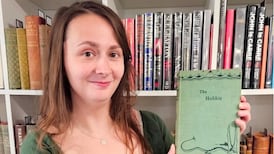
Colm Tóibín’s 11th novel opens with an angry Irishman at the doorstep of an American suburb. A sequel to the bestselling Brooklyn (2009), which was adapted for the 2016 Oscar-winning film, Long Island also turns on secrets, portrays the plight of immigration and pits duty versus desire.
Brooklyn followed young Eilis Lacey from Enniscorthy, where there was “no work for anyone” in the 1950s, to her new life in the United States. Summoned home for her sister Rose’s funeral, Eilis marries her boyfriend, Tony Fiorello, an Italian-American plumber, before the trip. While home, she has a fling with the “quiet, thoughtful” Jim Farrell, from whom she keeps her marriage a secret. When the truth gets out, Eilis returns to her life in Brooklyn.
Rather than picking up where Brooklyn left off, Long Island fast-forwards more than 20 years, to the mid-1970s. We find Eilis ensconced in Lindenhurst, an Italian-American enclave on Long Island. She lives on a quiet cul-de-sac in a house abutting her in-laws – Tony’s parents and two of his brothers with their wives and children. Eilis works for the family business before jumping ship to keep the books for a local mechanic. She has a good relationship with her two teenage children, Larry and Rosella, but laments having no close friends: “If there was one number she could call, one friend to whom she could recount the scene that had just been enacted at her front door!”
The s**t hits the proverbial fan when a stranger drops the bombshell that his wife is expecting Tony’s baby. The cuckolded client plans to leave “the little bastard” on their doorstep at birth. Defying the Fiorellos, who intend to raise the child but won’t admit it outright, Eilis says she’ll have no part in it. “I will call the fire brigade if I have to,” she tells her mother-in-law. She plans a trip to Wexford around her mother’s 80th birthday for time to think.
READ MORE
Having not returned to Ireland since the events of Brooklyn, Eilis rekindles the old flame with Jim, who now runs the family pub. He has never married but is secretly engaged to the widowed Nancy Sheridan, Eilis’s old schoolfriend. Just as Eilis kept her marriage secret when they met in their youth, Jim doesn’t tell her about his involvement with Nancy.
[ ‘I can’t do thrillers or spy novels or genre fiction. I just get bored'Opens in new window ]
Secrets are a recurring motif in Tóibín’s work – not only those kept from others, but self-knowledge denied to the characters themselves. He has ascribed his appetite for the theme to having grown up “in a provincial place where your sexuality is not just a secret but unmentionable”. It is this internal tension that made the fictionalised lives of Henry James and Thomas Mann so compelling in The Master (2004) and The Magician (2021), respectively. With the purposefully plain prose of his fiction, Tóibín is adept at conveying the gaps between thought and language where meaning resides. “They could do everything except say out loud what it was they were thinking,” he wrote in Brooklyn.
Eilis taking a stand about the baby is a surprising display of agency from a character who was previously marked by her passivity. It is a quality that made Brooklyn effective as a portrait of Irish emigration forced by circumstance, rather than a swashbuckling heroine’s journey. Given the sliding-doors opportunity with Jim, as Eilis comes of middle age alongside the women’s movement, will she put her needs first and take a chance on happiness?
Tóibín is less interested in capturing a period than interiority: while racism was addressed in Brooklyn, barring passing references to Vietnam, Nixon and the Troubles, Long Island is light on political or social commentary on either side of the pond. Although feminism isn’t mentioned explicitly in Long Island, however, we witness a turning of tables as Jim becomes the most passive player in the love triangle. Eilis’s mother is also portrayed as less gentle than in Brooklyn, resisting her daughter’s unasked-for home improvements.
[ Colm Tóibín: enjoying life on the Brooklyn roadOpens in new window ]
Long Island’s close third-person narration switches between the points of view of Eilis, Nancy and Jim. Fans of Brooklyn will enjoy revisiting the characters, as well as cameos from previous novels set in Tóibín’s native Enniscorthy. But the carefully crafted characterisation for which he is so admired cedes some space to exposition of the back story and soap-operatic plotting, accelerating towards an inconclusive end.
Will Tóibín write another sequel resolving Long Island’s unanswered questions? (Harlem perhaps, or The Bronx?) “I wouldn’t bet on it,” he has laughed. Oprah, who “wasn’t sure she was happy with the ending”, has nonetheless selected the novel for her book club. Tóibín will undoubtedly be delighted with the resulting bump in sales. He is aware of the potential trade-offs of writing a page-turner, however. Asked by The Paris Review about his masterfully quiet Nora Webster (2014), he said: “I was concerned that if I tried to write plot-led novels that were made to be turned into movies, I would lose something essential.”














